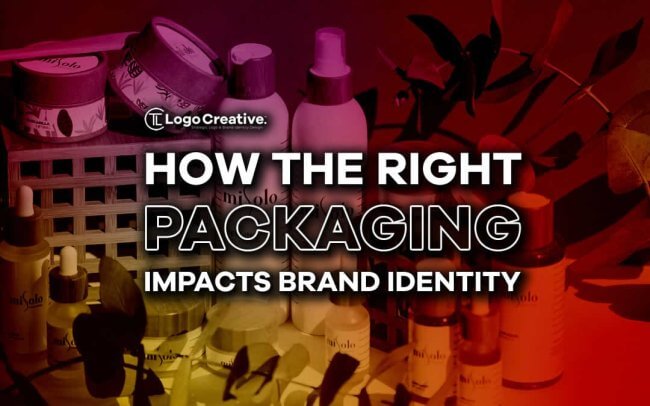You have a product of which you’re proud. You know you have devoted enough time and effort to develop it into the best offer you could share with consumers. There’s no way your product will fail in the market, or at least that’s the thought with which you convince yourself. In this article we look at How The Right Packaging Impacts Brand Identity
Unfortunately, as soon as you launch the product, no one takes the bait. What happens is the exact opposite of your expectations. Now, what could have gone wrong?
Sure, you’ve nailed your product logo design. You even made your presence known on various social media channels. Still, your preparations prove lacking.
Perhaps you have not fully maximized all the opportunities at your disposal for building a brand identity that truly captures consumers’ attention and interest. If that’s the case, it’s imperative to go back to the drawing board—gauge which aspects of your product you can finetune to empower brand identity.
Table of Contents
The Basics of Brand Identity
Brand identity is what sets you apart from other similar businesses. In saturated markets, a recognizable and memorable identity is what you need to command the attention of your target audience. Weak brand identity—or worse, non-existent—will derail the success of your business, no matter how impressive the product mix you have.
Ideally, brand identity provides external cues to consumers that will help them connect better with you. If done right, brand identity will establish a positive impression in a consumer, enough for them to patronize everything you have to offer for a long time.
Brand identity has the power to communicate six levels of meaning. They are as follows.
- Attributes – Your brand identity may paint your products as posh and exclusive, or you may use it to tell a message of inclusivity and accessibility.
- Benefits – These come in two levels: emotional and functional advantages.
- Value – If you sell organic products, your brand identity must communicate your commitment to health and sustainability.
- Culture – Want to appeal to a niche market? Make sure your brand identity aligns with that market’s unique proclivities.
- Personality – Think of brand identity as your attempt to make your brand less of a business and more of a person your target consumer can befriend.
- User – Brand identity cues invite the right consumers closer.
Impacts of Product Packaging on Brand Identity
An often-overlooked determinant of brand identity is product packaging. Some brands commit the fatal mistake of haphazardly designing packaging that does a great disservice to the actual product; such a mistake must be avoided. Remember the following.
- Communicating the Brand Message – On-point product packaging is not all about aesthetics. One of its most essential functions is communication. The packaging should provide everything a consumer needs to know about a product.
For example, if you’re selling snacks, you can’t do away with a nutrition label. That will help consumers decide whether the food you hawk is suited to them. As for detergents, information on their safe use will be necessary. Omission will paint you as an irresponsible business that does not care about consumers, and that’s not a good message to convey.
- Product Consideration Relative to Packaging – Sure, we have already established that product packaging is crucial to efficient brand marketing. If you want to sell a lot, your products better look great on a shelf, whether that’s online or off.
However, that goes without saying that what’s inside that product packaging remains as the star. And if that star proves lackluster, no matter how shiny the outside is, you can’t expect repeat purchases. So, if your product packaging looks quite promising, make sure what awaits consumers once they open it delivers that promise.
Now, what does that say about your brand identity? For one thing, you’re honest and reliable.
- Package Protection – Many businesses have supplemented brick-and-mortar sales with ecommerce. That means consumers put their purchases in a digital cart, go to checkout, and wait days for their order’s delivery.
If your product has poor packaging, it might suffer wear and tear while in transit. It will reach the consumer in a not-so-presentable manner. The consumer will understandably feel upset. That’s an opportunity for repeat transactions lost in an instant. In worst-case scenarios, the customer might even ask for a refund.
Not only are these situations bad for business, but they are also detrimental to the brand identity you wish to build. They convey irresponsibility and lack of foresight.
So as not to be accused of those, be mindful of how durable your product packaging is. For starters, pick suitable materials; if you’re selling something with substantial weight, product packaging made of thick cardboard may do the trick.
- Relationship Building – You’ve probably seen one of those unboxing videos on social media. Consumers have taken to the habit of recording the instance when they unbox their purchases and posting the video online. This is a trend you can use to your advantage.
Make your product packaging exciting and interactive. If you do so, consumers will deem your brand worthy of an unboxing video, and that’s free marketing for you. Keep in mind that user-generated content is a viable tool in any brand’s marketing arsenal. It gives your business street cred.
Packaging: Protecting Your Products and Your Brand
It’s never enough to dish out a product of undeniable purpose and quality. Keep in mind that more often than not, consumers respond to what they see in the market in a not-so straightforward manner.
They don’t just buy what they need or want or what they deem to give their money’s worth. They buy for reasons that are sometimes difficult to fathom. But we can always surmise as to what those reasons might be.
For example, consumers are more likely to buy products from a brand with whom they feel a connection. Maybe they think they share the same values with a brand. Or they admire everything a brand stands for, whether in an aesthetic or political sense. This is where a strong brand identity comes in.
Make sure that all elements of how you sell your product contribute to a cohesive brand identity. More importantly, don’t forget to zero in on building brand identity through packaging.
Join The Logo Community
We hope this article about How The Right Packaging Impacts Brand Identity has been helpful. If you would like more personal tips, advice, insights, and access to our community threads and other goodies, join me in our community. You can comment directly on posts and have a discussion.
*TIP – We use and recommend DesignCuts for all your fonts, mockups and design bundles.
 Author Bio
Author Bio
Adam Peek is a father of 5, husband of 1. He is also the host of the People of Packaging podcast and a VP at Meyers Printing. His passion for changing the world has also led him to be a sustainability consultant, sales trainer, global keynote speaker/preacher, soon to be Children’s Book author…and a part time rapper.

